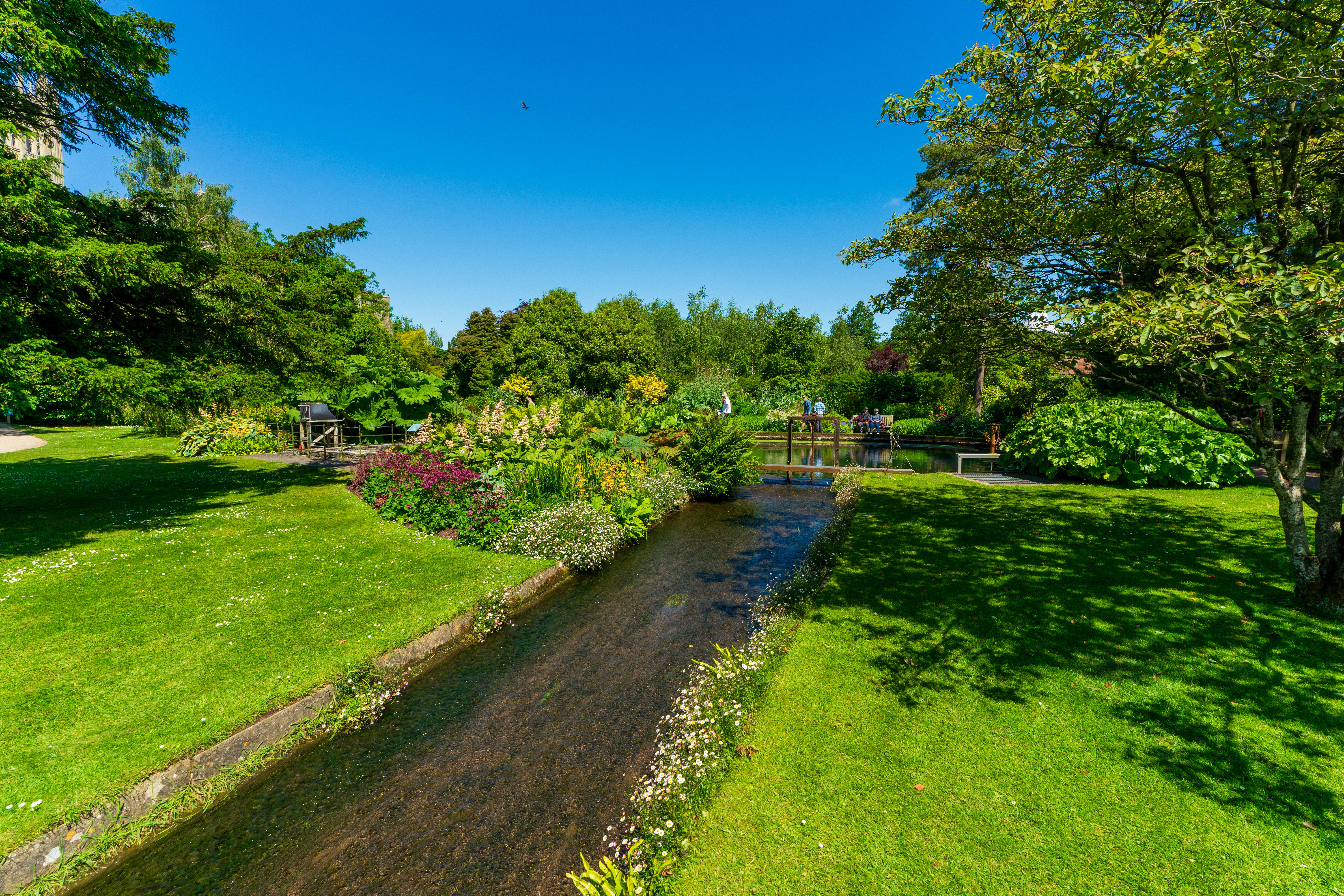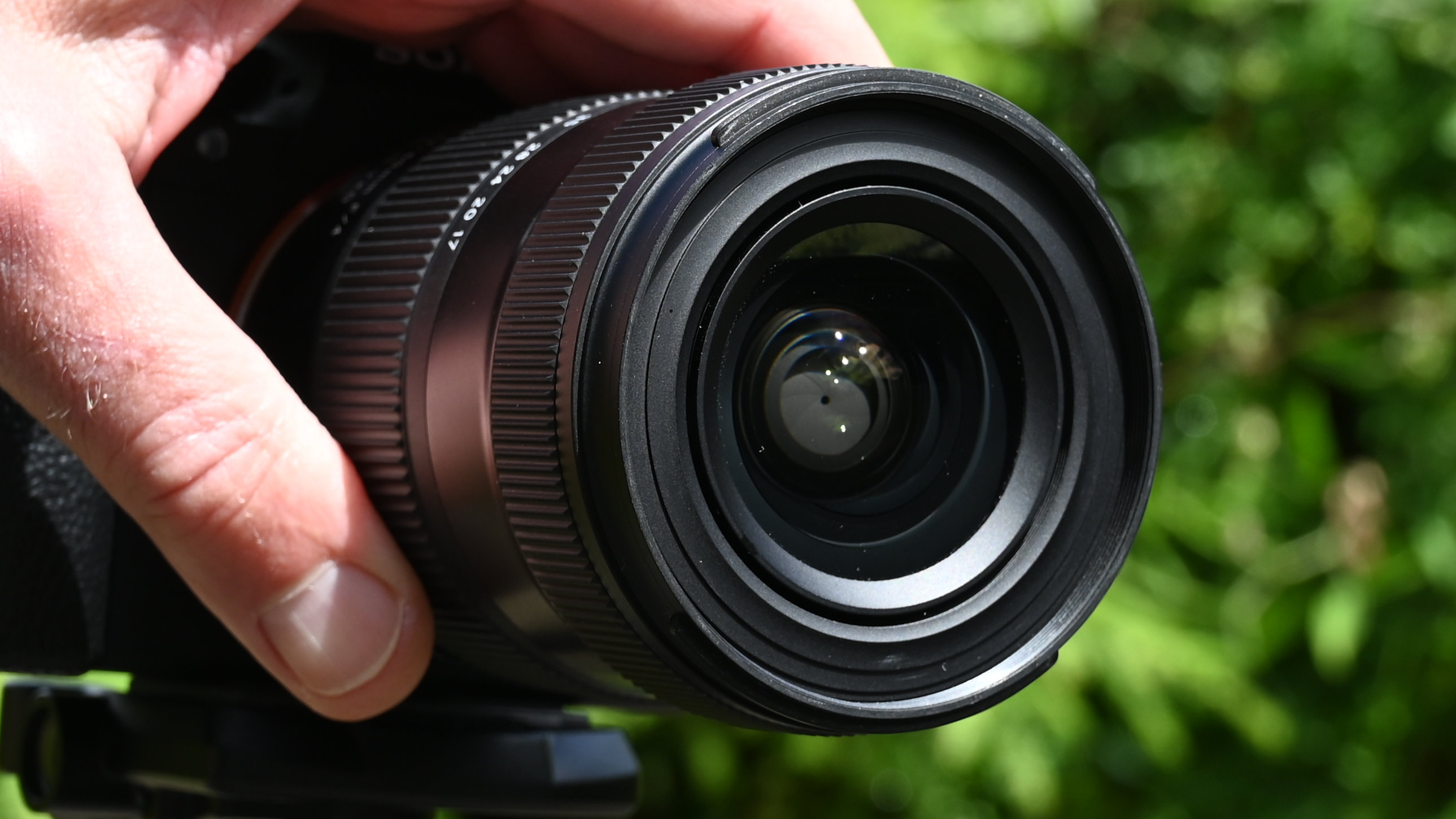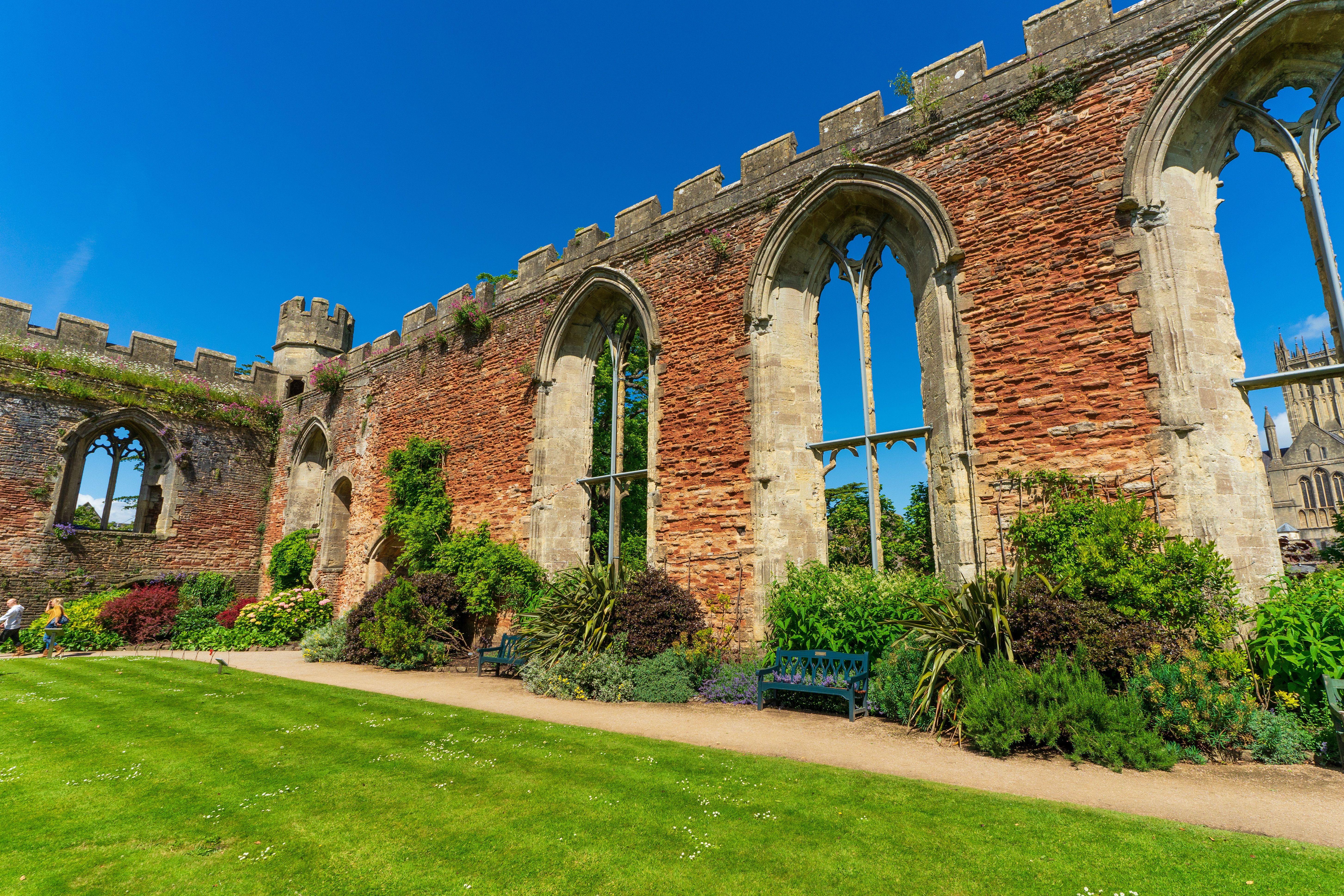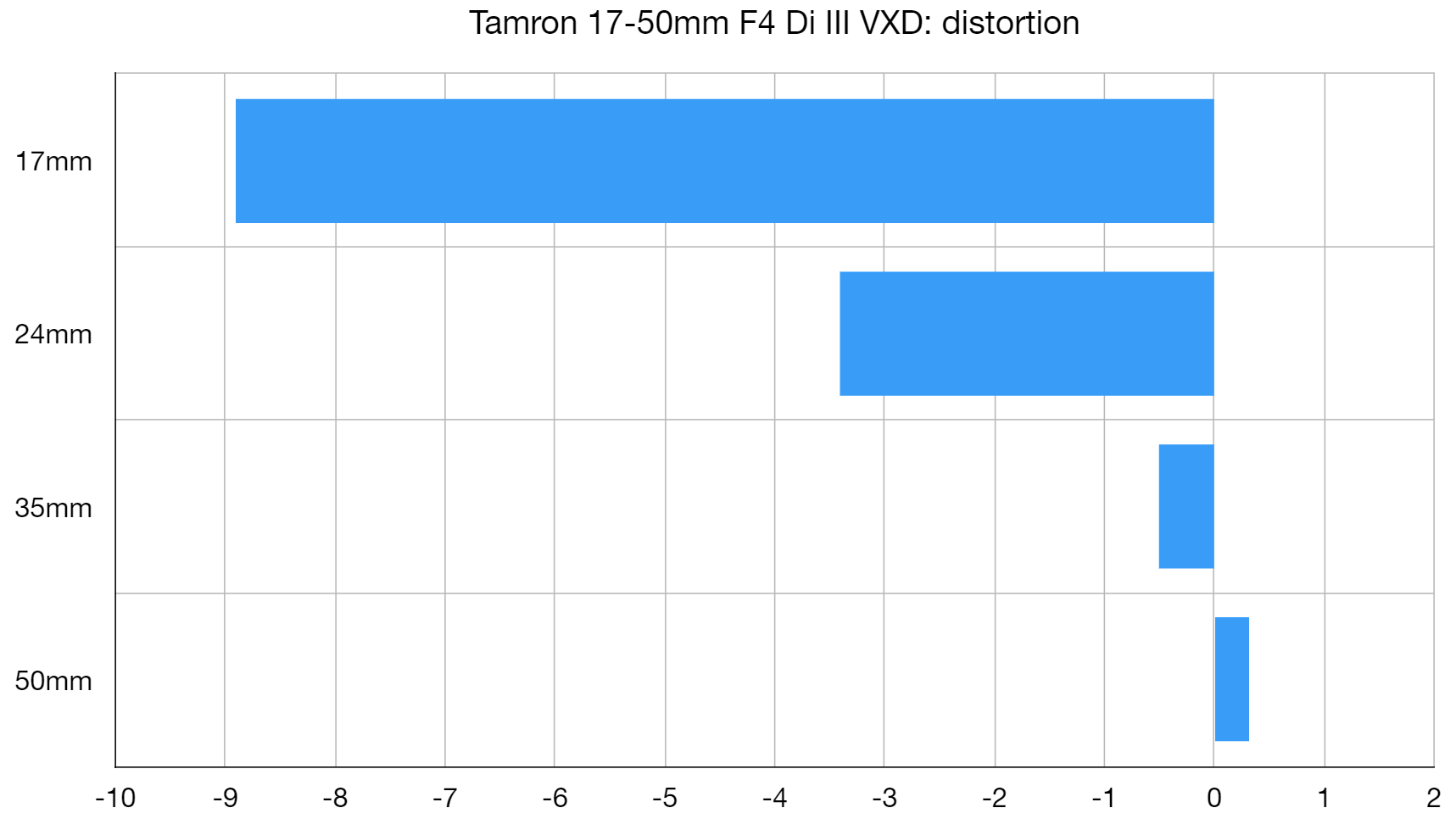Digital Camera World Verdict
I like the versatility of the Tamron 17-50mm F4 Di III VXD. It gives me a generous wide-angle view at one end and a standard perspective at the other, plus everything in between. I also like that it’s compact and lightweight yet solid and robust, and delivers very good image quality and all-round performance. What’s not to like?
Pros
- +
Useful 17-50mm zoom range
- +
Constant f/4 aperture
- +
Good handling
- +
Compact and lightweight
Cons
- -
Edge-sharpness could be better
- -
Variable minimum focus distance
- -
No aperture control ring
- -
No optical image stabilization
Why you can trust Digital Camera World
Let’s face it, many of us digital photographers don’t really like swapping between lenses on our cameras, and I’m one of them. The ever-present risk of dust blowing into the camera and sticking to the image sensor plays on my mind, especially in inclement conditions. If I’m off to shoot landscapes, cityscapes, or architectural interiors, it’s a pain to have to keep switching between wide-angle and standard lenses.
The Tamron 17-50mm means I don’t have to. Mounted on a full-frame Sony body, it has a range of viewing angles that covers everything from 103.7 to 46.8 degrees. In practical terms, that’s really wide-angle coverage at the short end and an entirely natural perspective at the other. The zoom range also works really well for vlogging, giving the opportunity to set the scene by including the backdrop while presenting to camera, as well as zooming in for a close-up.
Suffice it to say that this Tamron is a very versatile zoom that aims to be one of the best lenses for Sony cameras and the best E-mount lenses for vlogging.
Tamron 17-50mm F4 Di III VXD: Specifications
| Mount options | Sony E (FE) |
| Lens construction | 15 elements in 13 groups |
| Angle of view | 103.7-46.8 degrees |
| Diaphragm blades | 9 |
| Minimum aperture | f/22 |
| Minimum focus distance | 0.19m (W) 0.3m (T) |
| Maximum magnification | 0.22x (W) 0.26x (T) |
| Filter size | 67mm |
| Dimensions | 75x114mm |
| Weight | 460g |
Tamron 17-50mm F4 Di III VXD: Price
The Tamron 17-50mm F4 Di III VXD has a list price of $699 / £719, measures 75x114mm, and weighs 460g.
It’s not the first wide-to-standard zoom of sorts that I’ve seen from Tamron. There’s also the Tamron 20-40mm F2.8 Di III VXD for Sony cameras which naturally has less outright zoom range but is an f/stop faster and weighs in at an even smaller and lighter 74x87mm and 365g. That one comes with a $699 / £749 price tag. Then there’s the own-brand Sony FE 24-50mm F2.8 G at a pricier $1,098 / £1,149, which has vital statistics of 75x92mm and 440g. The Sony lens doesn’t come anywhere close in wide-angle potential but again has a faster f/2.8 aperture.
All in all, if you want to maximize your wide-angle to standard zoom range and can settle for a constant f/4 aperture, the Tamron 17-50mm looks good value for money.
Tamron 17-50mm F4 Di III VXD: Design & Handling
The Tamron 17-50mm F4 claims to be a ‘world first’ for Sony E-mount full-frame cameras, covering ultra-wide-angle to standard focal lengths in one convenient lens. Part of that ‘convenience’ as far as I’m concerned is that it’s compact and lightweight, measuring 75x114mm and weighing a mere 460g.
The best camera deals, reviews, product advice, and unmissable photography news, direct to your inbox!
Another bonus is that the overall physical length remains fixed throughout the zoom range, although there’s an extending inner barrel that nears the front of the outer barrel at short and long zoom settings, being fully retracted at around the 30mm mark. And speaking of marks, the zoom ring has markings for 17mm, 20mm, 24mm, 28mm, 35mm, and 50mm focal lengths. That covers a broad spread but, as usual with lenses for mirrorless cameras, there’s no focus distance scale.
Although the outer physical length remains fixed throughout the zoom range, I can’t say the same for the minimum focus distance. This stretches from 0.19m at the wide-angle end to 0.3m at the longest zoom setting. Even so, those are pretty short distances throughout, giving a maximum reproduction magnification of a generous 0.26x at the long end.
From a creative point of view, I like that the short minimum focus distance at wide-angle focal lengths lets me get in really close to objects and exaggerate the perspective between foreground and background elements within a scene. It also makes the lens particularly useful for vlogging. For shooting video in general, the lens is designed to have minimal focus breathing and the constant f/4 aperture throughout the zoom range is a bonus.
When it comes to glass, the lens has 15 elements arranged in 13 groups and boasts 3 LD (Low Dispersion) elements, a GM (Glass Molded Aspherical) element and 2 hybrid aspherical elements. The mix aims to maximize sharpness and clarity while minimizing color fringing and other aberrations.
Autofocus is courtesy of Tamron’s VXD (Voice-coil eXtreme-torque Drive) linear stepping motor design. Again, this is ideally suited to both stills and video capture, being quick and snappy for stills and enabling smooth and virtually silent autofocus transitions when shooting video. A customizable function button is also featured, defaulting to autofocus-hold.
While the lens is undeniably lightweight (in a good way) it feels solid and well-built. The construction features multiple weather-seals and there’s a fluorine coating on the front element to repel moisture and greasy fingermarks. The lens comes complete with a petal-shaped, bayonet-fit lens hood which, as usual, is reversible for compact stowage. The pinch-clip lens cap is easy to fit and remove even with the hood in its forward-facing orientation.
Tamron 17-50mm F4 Di III VXD: Performance
I found the Tamron 17-50mm really easy to live with. I really enjoyed the way that the zoom range made the lens very adept for anything and everything from landscape and architectural shots to photos requiring a standard field of view. Autofocus is consistently accurate, while sharpness and clarity are very pleasing throughout the zoom range, although sharpness towards the extreme edges and corners of the frame could be a little better.
Naturally, the f/4 aperture rating isn’t exactly ‘fast’ but the 0.3m minimum focus distance at the long end of the zoom range gives plenty of scope for close-ups, with a tight depth of field. Sharpness remains very good in the central region of the frame, even at close shooting distances, a further upside being that bokeh is soft and smooth. That’s something I’ve usually found with Tamron lenses.
Many current and recent lenses designed for mirrorless cameras, especially wide-angle lenses, rely heavily on automatic in-camera correction for distortion. This Tamron is no exception, with extreme barrel distortion at the shortest zoom setting but, with correction applied, distortions throughout the zoom range become pretty much a non-issue.
Tamron 17-50mm F4 Di III VXD: Sample Images
The following gallery of images was taken throughout the zoom range of the lens, mounted on a Sony A7 II body. The location is the Bishop’s Palace & Garden in the Somerset city of Wells in the UK. For lab tests, we used the lens with a Sony A7R III camera body.

















Tamron 17-50mm F4 Di III VXD: Lab Results
We run a range of lab tests under controlled conditions, using the Imatest Master testing suite. Photos of test charts are taken across the range of apertures and zooms (where available), then analyzed for sharpness, distortion and chromatic aberrations.
We use Imatest SFR (spatial frequency response) charts and analysis software to plot lens resolution at the center of the image frame, corners and mid-point distances, across the range of aperture settings and, with zoom lenses, at four different focal lengths. The tests also measure distortion and color fringing (chromatic aberration).
Sharpness:
Center-sharpness is impressive throughout the entire zoom range, although it pays to narrow the aperture a bit in the 35-50mm sector. Stopping down a bit also improves edge-sharpness, which comes on strong in the 17-35mm section of the zoom range, but there’s room for improvement at the longest 50mm setting.
Fringing:
Color fringing is very negligible even at the extreme edges and corners of the frame in the 17-35mm sector of the zoom range. It can become slightly noticeable at the long end when using wide apertures but remains well within the remit of automatic in-camera correction.
Distortion:
Barrel distortion is extreme at 17mm and still very noticeable at 24mm. There’s only minor barrel distortion at 35mm and a touch of pincushion at 50mm. Like many recent lenses for mirrorless cameras, the Tamron relies heavily on automatic in-camera correction, which works very well.
Tamron 17-50mm F4 Di III VXD: Verdict
For walkabout shooting, street photography and for landscapes, cityscapes and architecture, I find that I generally don’t need anything longer than a 50mm focal length, but I often want greater wide-angle coverage than a ‘standard’ 24-70mm zoom lens can deliver. The Tamron 17-50mm is a great alternative to standard fare, really stretching the envelope in terms of expansive viewing angles, while still giving me a standard perspective at the long end, as and when I want it. With nice handling and build quality, fast and consistently accurate autofocus, along with impressive image quality, this Tamron lens was an instant hit for me, and it’s very good value at the price.
| Features | The lens has a strong feature set but the lack of optical stabilization isn’t ideal for early A7 cameras. | ★★★★ |
| Design | There’s no aperture control ring but the design is refreshingly compact and lightweight. | ★★★★★ |
| Performance | It’s very good overall but edge-sharpness could be a little better and uncorrected barrel distortion is extreme. | ★★★★ |
| Value | Ultimately, the versatility of the lens for both stills and video makes it great value for money. | ★★★★★ |
Should you buy the Tamron 17-50mm F4 Di III VXD?
✅ Buy this...
- You favor ultra-wide-angle to standard focal lengths and want a single lens that covers all the bases.
- You want a lens that’s ideal for both stills and video, with a zoom range that’s particularly suitable for general shooting scenarios as well as vlogging.
🚫 Don't buy this...
- You’d prefer a more typical ‘standard’ zoom range that doesn’t cover ultra-wide focal lengths but extends to short telephoto reach.
- You’d rather have a faster f/2.8 constant aperture design, more ideal for gaining a tighter depth of field and enabling quicker shutter speeds.
Alternatives
The Tamron 20-40mm F2.8 Di III VXD for Sony cameras is even more compact and lightweight, while boasting a faster f/2.8 aperture that’s again constant through the zoom range. It measures 74x87mm, weighs 365g and costs around $699/£749.
In the own-brand Sony line-up, the Sony FE 24-50mm F2.8 G is a rather pricier lens at around $1,098/£1,149. It lacks ultra-wide-angle potential but has exotic handling characteristics including an aperture ring with a click/de-click switch, measures 75x92mm and weighs 440g.
Matthew Richards is a photographer and journalist who has spent years using and reviewing all manner of photo gear. He is Digital Camera World's principal lens reviewer – and has tested more primes and zooms than most people have had hot dinners!
His expertise with equipment doesn’t end there, though. He is also an encyclopedia when it comes to all manner of cameras, camera holsters and bags, flashguns, tripods and heads, printers, papers and inks, and just about anything imaging-related.
In an earlier life he was a broadcast engineer at the BBC, as well as a former editor of PC Guide.


















